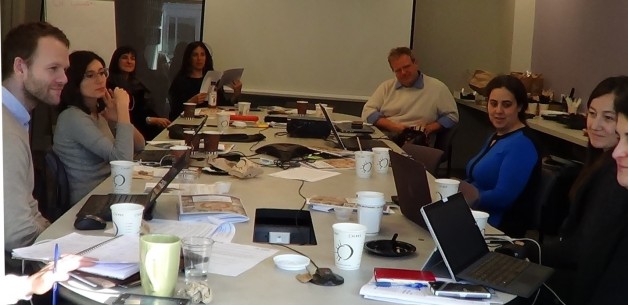On January 21 and 22, BIC hosted a child rights expert meeting to discuss how to operationalize the World Bank’s proposed new requirement to assess risks to children in its investment loans. The Bank’s latest draft of the updated safeguards, now known as the Environmental and Social Framework (ESF), was released in the summer of 2015 and includes a provision that requires environmental and social impact assessments (ESIAs) to assess risks to children. However, the draft provides no detail on how such assessments should be carried out. With the third and final phase of consultations on the ESF currently underway, BIC partnered with the Child Protection in Crisis Learning Network to develop recommendations for the Bank on this important issue.


Organizing Principles and Concepts
The participants in the meeting focused on developing possible indicators to measure potential impacts of projects on children. The experts had significant expertise in various fields such as humanitarian aid, child development, public health, and statistics and monitoring, which led to a rich discussion around the broad range of potential indicators that could be encompassed in a social impact assessment. As a first step, the experts identified key principles and operationalizing concepts that they believe the World Bank should adhere to as it develops possible indicators, and eventually its procedures and guidance. Common themes that arose in these discussions included, among others: participation of children, and a holistic understanding of childhood.
Key Domains of Child Wellbeing and Protection
The experts also identified several domains of potential impacts that should be considered in impact assessments, and agreed that disaggregated data was also an important element to include in assessments, including by gender, developmental stages, and special populations including children with disabilities and LGBTI children. Some of the domains of potential indicators that were identified included: impacts on livelihood, access to quality services, and social cohesion. Overall, the experts agreed that impact assessments should be guided by principles of child development, and stressed that while all of these domains should be looked at separately, they should also be considered in an integrated way.
Practical Guidance
In terms of practical guidance, the experts agreed that mixed methods for gathering information on children is important. They also discussed common problems associated with gathering sensitive information from children, and offered suggestions around avoiding harm in information collection as well as monitoring projects for negative impacts such as sexual violence. There was significant discussion around the importance of sufficient training and budget resources that would be required to bring relevant staff and assessment professionals up to speed on the new requirements and guidance, as well as the importance of drawing lessons already learned from other international agencies dealing with similar issues. The experts also pointed to the expertise around child protection and the interest in investing in children that already exists in the Bank and the value of bringing their in house expertise to bear on these issues.
The experts presented their initial recommendations to Maninder Gill, the World Bank’s Director for the Social, Urban, Rural and Resilience (SURR) Global Practice. The meeting closed with an agreement to work together with the Bank to pilot some of these ideas in future projects, and to continue the dialogue as the Bank further develops its procedures and guidance through the end of the safeguards review process. Some of the key concepts and ideas that were presented are listed below. The experts and participants in the meeting agreed that these lists are preliminary and should be elaborated upon through further dialogue and pilot processes.
Organizing Principles and Concepts
- Quality of impact assessments
- Independence of impact professionals
- Participation of children
- A holistic understanding of childhood
- Adhering to principles of child development
- Importance of taking a cross cutting approach to each domain
- Disaggregate data under each domain and indicator by gender, developmental stage, etc.
Key Domains of Child Wellbeing and Protection



